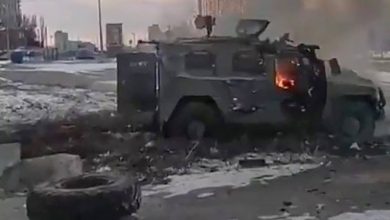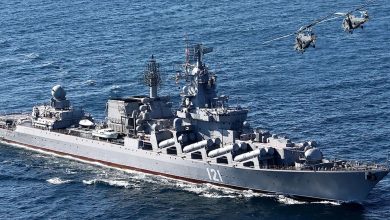Russia’s invasion of Ukraine: Concerns over deployment of new hypersonic missile

The Russian army said it used hypersonic missiles in two attacks in Ukraine. The rockets, which are difficult to intercept, are causing concern in the West – but their use is not a turning point in the war.
The Russian use of hypersonic missiles in the war in Ukraine has also raised concerns among German politicians. “The use of the hypersonic weapon is a real test before the eyes of the world and a signal to NATO: Don’t interfere, because we have weapons against which you can hardly defend yourself,” said the CDU defense politician Johann Wadephul the newspaper “Welt”. “Unfortunately, there is a capability gap in NATO that we urgently need to close.”
The foreign policy spokesman for the FDP parliamentary group, Ulrich Lechte, called the operation “historic and another level of escalation”.
Russia speaks of two missions
According to experts, it was the first time that Russian troops used the Kinzhal (Dagger)-type missile in a war.
According to the Russian army, it has fired “Kinschals” twice in the past few days: On Friday, an underground weapons depot in western Ukraine was destroyed, on Sunday a fuel depot in the Mykolaiv region in the south of the country. These reports cannot be independently verified.
Rocket can dodge anti-aircraft defenses
According to Russian information, the missiles fly very fast and high, but can be controlled during flight and thus avoid air and missile defenses. They can be equipped with a warhead weighing up to 480 kilograms. A nuclear warhead is also possible. The projectiles are fired from the air by a fighter jet.
While Russia claims that the “Kinzhal” can fly at up to ten times the speed of sound (Mach 10), i.e. around 12,350 km/h, there are doubts in the West: A NATO document from November 2020 says it can possible that it cannot fly faster than Mach 5. For comparison: a conventional Tomahawk cruise missile, for example, only flies at around 900 km/h.
Rocket creates strategic uncertainty
A report from the Munich Security Conference in 2019 stated: “Hypersonic missiles, with their novel combination of speed and maneuverability, can overcome all current missile defense systems and radically reduce the reaction time of the attacked actor.”
In the West, the missiles are viewed with great concern, mainly because they create strategic uncertainty: in the event of an attack in Western Europe, it is unclear whether a conventional missile is flying towards the target so quickly or whether it is a nuclear attack.
Other countries, including the United States and China, are also working on the development of hypersonic missiles.
Pentagon: Operation in Ukraine not a turning point
US Secretary of Defense Lloyd Austin declined to confirm or comment on Russia’s alleged two operations in Ukraine. However, the United States did not see them as a “game changer”, i.e. a turning point in the war, Austin told the US television station CBS. According to Austin, the fact that Russia is firing hypersonic missiles could be aimed at “restoring a certain dynamic.” Because the advance of the Russian troops was halting, they had changed their tactics and were increasingly targeting civilians, Austin said. Russia has “directly attacked cities and civilians and we expect that to continue.” The Ukrainian army poses “significant problems” to the Russian armed forces.




